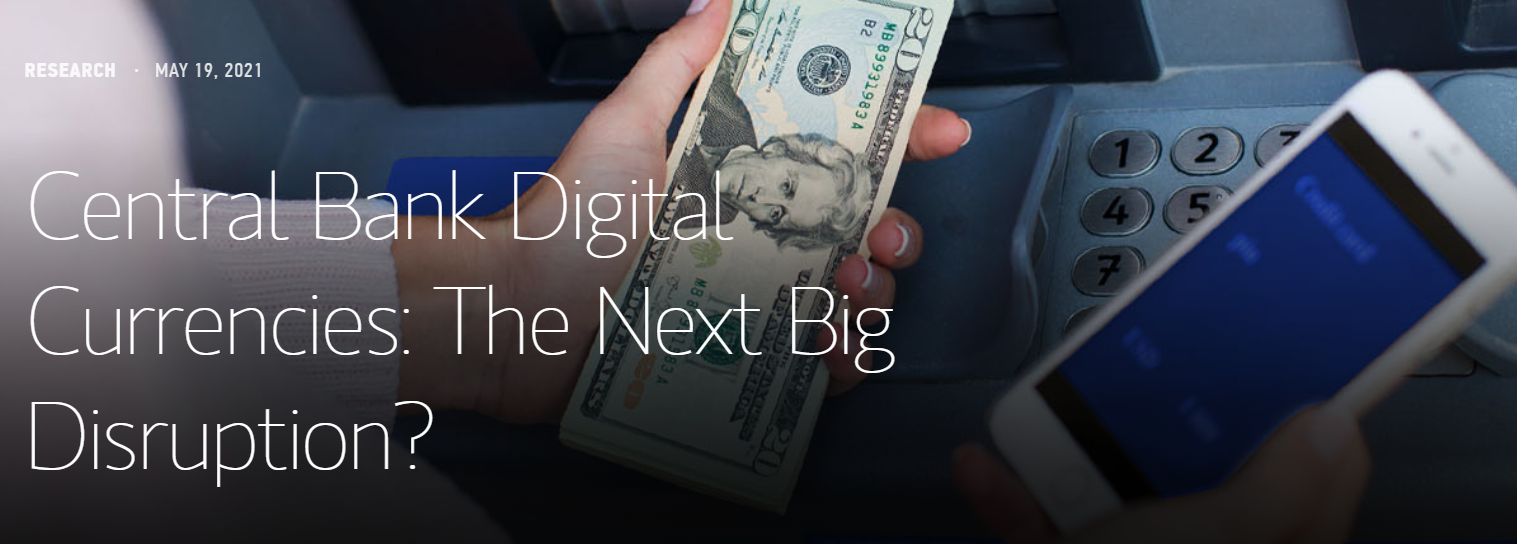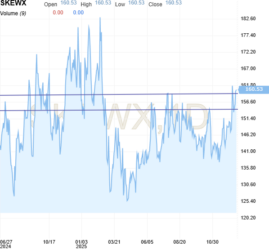Morgan Stanley analyserer centralbankernes overvejelser om at indføre digitale valutaer, og det kan føre til store omvæltninger i finansverdenen. 86 pct. af verdens centralbankere har planer om at indføre en digital valuta som erstatning for de gængse valutaer. Kina har allerede flere pilotprojekter, og ECB vil træffe en afgørelse til sommer. Det helt afgørende bliver, om private og virksomheder kan flytte deres bankkonti til centralbankerne.
Central Bank Digital Currencies – The Next Big Disruption?
Plans to introduce digital currencies are gaining momentum among the world’s central banks. But what level of disruption will it bring to the financial system?
The word “disruption” is not typically associated with central banks. But as central banks edge closer to introducing their own digital currencies, significant disruption could play out in the financial system.
Central Bank Digital Currencies, often called CBDCs, are a new form of digital cash intended to replace physical cash. Before I go any further, it’s important to note that digital currencies should not be confused with cryptocurrencies, which are either pegged to an underlying asset—think stablecoins—or backed by a blockchain, such as Bitcoin.
CBDCs, by contrast, are just as advertised: a digital form of currency issued and backed by a central bank and maintained in a centralized ledger. It’s essentially digital cash.
Why are we talking about CBDCs right now? Efforts to introduce CBDCs are gaining momentum, with as many as 86% of world central banks exploring their own digital currencies. China has already piloted trials of CBDC in a number of its cities, the European Central Bank is expected to decide on its digital euro this summer, and the Federal Reserve Bank of Boston is set to release its initial research in the fall.
So, what explains this sudden interest from the central banks to launch digital currencies? There are three reasons:
1. Monetary sovereignty. Private payment networks have expanded rapidly. As they gain market share, these networks could become a primary means of transactions. Central banks may be concerned that money will circulate almost exclusively within the networks, posing a threat to their management of the global monetary system.
2. Financial stability. The potential failure of a private provider of digital cash could disrupt the payment system and destabilize the financial system. While regulators have taken steps to mitigate these risks, they can’t completely eliminate them. But if they issue their own digital currencies, they can guarantee their reliability as a medium of exchange.
3. Financial inclusion. The rise of private, narrow money networks could exclude segments of the general public, such as the unbanked population. A CBDC, just like physical cash, can be made available more broadly and support greater financial inclusion.
The question is, how disruptive could CBDCs be? When something as fundamental as what you use to buy a cup of coffee changes, the effects are likely to be far reaching.
For example, commercial banks could face disintermediation, that is, be cut out of transactions if consumers use non-banking entities. Once a digital currency launches, consumers will be able to transfer their bank deposits to their CBDC accounts, subject to central bank limits. And the technological infrastructure of CBDCs could also make it easier for new nonbank entities to enter the payment space. As this transition accelerates, the competitive pressures on commercial banks will likely increase.
Another area of impact could be transactions data. At Morgan Stanley, we expect a tug of war between the consumers who want to stay anonymous and the innovative fintech companies that will create incentives for consumers to use their platforms, thereby generating valuable user transaction data. Fintech success could spark a proliferation of network effects that allow them to gain market share vs. traditional banks.
CBDCs could also disrupt the international payment system. Any country with a CBDC that is accepted for international transactions could enjoy significant advantages in financing costs and control over financial transactions, similar to the U.S. dollar’s privileged role today. Some central banks, like the ECB and the People’s Bank of China, see the move toward digital currency as an opportunity to raise the international status of their respective currencies and share of cross-border payments.
While CBDC initiatives aren’t intentionally disruptive, they will likely bring unintended consequences that are. The pace of disruption will hinge on how quickly network effects take hold in the CBDC system; the more widely digital currencies are accepted, the more opportunity for innovation, and the greater the scope for disruption to the financial system.




